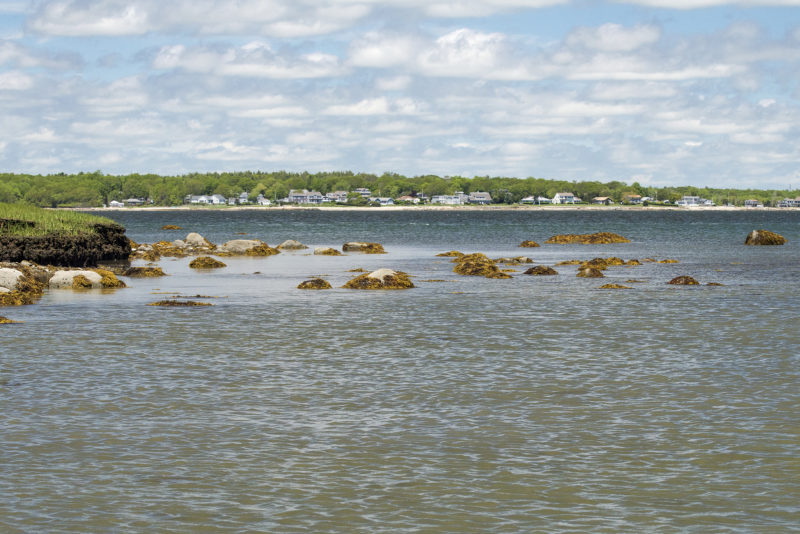West Island & New Silver Beach report outlines effectiveness of compact wastewater treatment facilities
Two waterfront summer communities with serious septic system problems; two model wastewater treatment facilities that made these neighborhoods safer, more environmentally friendly places to live. A new report by the Coalition shows how West Island in Fairhaven and New Silver Beach in North Falmouth secured their wastewater futures, and outlines how other communities like them could follow in their footsteps.

West Island in Fairhaven went from a small seasonal neighborhood to a dense year-round community.
The report outlines how these two densely populated, coastal neighborhoods on Buzzards Bay both began seeing their homes’ septic systems begin to fail as they transitioned increasingly from seasonal to year-round communities. For these growing communities, septic system backups and flooding became a part of life; around New Silver, there were even accounts of homeowners flushing toilets and wastewater instantaneously surfacing in a neighbor’s yard.
The problem came to a head for both communities with the landfall of Hurricane Bob in August of 1991. The storm flooded into low-lying areas, inundating wells and septic systems with water. West Island homes, which still relied on well water, found its drinking water contaminated with bacteria to the point of being undrinkable. Meanwhile, Falmouth officials issued a public health emergency for the New Silver area.
In the aftermath of Bob, both towns agreed that outdated septic tanks and cesspools were the cause of bacterial contamination. Deciding on a solution, however, wasn’t so cut and dry; after much deliberation and many a town meeting – in the case of New Silver, twelve years of both – these two communities both decided to build small wastewater treatment plants for each area. The West Island wastewater treatment facility opened in 1999, while the New Silver wastewater treatment facility began servicing homes in 2010.
Both treatment plants remove both nitrogen and bacteria from wastewater before it is discharged – and the impact of doing so shows. Neither community has experienced drinking water contamination events since the facilities were constructed. Simultaneously, the Coalition’s water quality monitoring has shown declining pollution to nearby waters: stations in Wild Harbor and Wild Harbor River, near to New Silver, have shown significant decreases in average ammonium, dissolved inorganic nitrogen, and phosphate concentrations. A Nasketucket Bay station near West Island has found a slight, but noticeable, decrease in average concentrations of nitrate/nitrite and dissolved inorganic nitrogen concentrations.
Nitrogen pollution remains one of the biggest contamination issues in waters around Buzzards Bay, leading to harmful algae blooms and the diminishing of shellfish and eelgrass beds. As such, working with towns to improve their septic systems and reduce the amount of nitrogen and other contaminants in their wastewater continues to be one of the Coalition’s top priorities.
From a financial perspective, the plants have also improved home saleability. In the case of West Island, property values on the island, once 15 percent behind those in Fairhaven, are now about 16 percent higher than the rest of the town.
“The motivation behind this report was to showcase both of these compact wastewater treatment facilities, since they resolved the septic system issues in these areas,” explained Christine Gurdon, a research assistant on the Coalition’s science team who helped prepare the report. “There are still many communities like West Island and New Silver Beach, so the hope is to encourage other towns to follow their footsteps.”